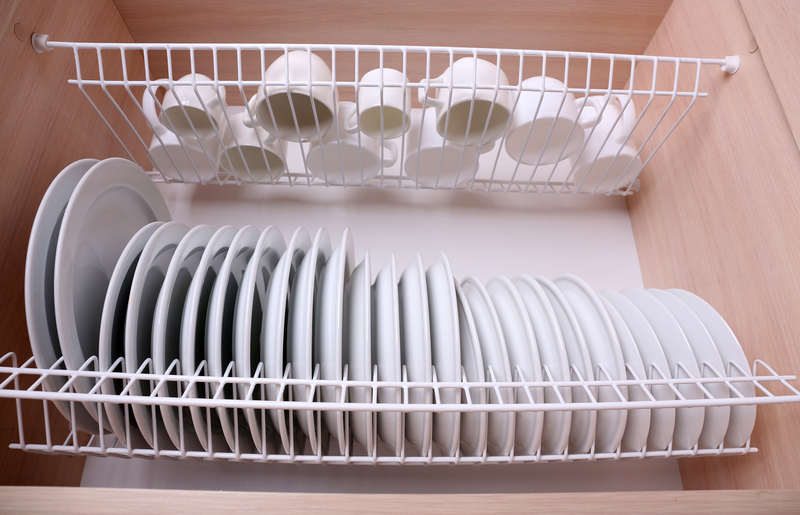Get your window sills looking fresh with expert mould-cleansing techniques
Posted on 22/08/2025
Get Your Window Sills Looking Fresh with Expert Mould-Cleansing Techniques
Is unwelcome mould taking over your window sills? You're not alone! Mould on window sills is a common household problem, but luckily, with the right approach, you can easily restore their clean, fresh look. In this comprehensive guide, we reveal the most effective mould-cleansing methods, expert tips for prevention, and solutions for keeping your window sills mould-free long-term. Say goodbye to unsightly spots and hello to sparkling sills!
Understanding Mould Growth on Window Sills
Mould can not only make your home look unkempt but also pose health risks such as allergies and respiratory problems. Tackling mould on window sills requires more than just a wipe-down; it's crucial to understand why it's happening in the first place.
Why Does Mould Grow on Window Sills?
- Humidity: Elevated moisture near windows creates a breeding ground for mould spores.
- Poor Ventilation: Lack of airflow allows condensation to settle around sills and frames.
- Leaky Windows: Damaged seals and window frames permit water ingress.
- Organic Materials: Wooden sills, dust, and debris provide food for mould growth.
Identifying the root cause is the first step in addressing the problem effectively.

Essential Tools and Safety Precautions
Before you begin cleaning your window sills, gather the right supplies and take safety precautions to protect yourself from mould exposure. Here's what you'll need:
- Rubber gloves
- Protective glasses
- Face mask (N95 or equivalent)
- Soft and stiff-bristled brushes
- Microfiber cloths or sponges
- Bucket of warm water
- Cleaning solution (see below)
- Old toothbrush for tight spots
Safety Tips:
- Keep the area well-ventilated by opening windows or using fans.
- Do not mix chemical cleaners like bleach and ammonia.
- Dispose of cleaning materials after use if heavily contaminated.
Expert Mould-Cleansing Techniques for Window Sills
There's more than one way to clean mould from window sills. Here we share proven, expert mould-removal methods suitable for different sill materials (painted wood, PVC, aluminum).
1. Natural Cleaning Solutions for Mild Mould
If the mould is minor and non-toxic black mould, try natural remedies first. These are safe for families, pets, and the environment.
- White Vinegar: Pour undiluted white vinegar into a spray bottle, apply to the mouldy area, and let it sit for 1 hour. Wipe clean with a damp cloth.
- Baking Soda: Create a paste with water, apply to stains, and scrub gently with a brush. Rinse thoroughly.
- Lemon Juice: Natural acidity kills mould and leaves a fresh scent. Apply directly and wipe after 15 minutes.
2. Heavy-Duty Chemical Methods
For more stubborn or widespread growth, consider stronger cleaning agents. Always test a small area first, especially on painted or stained wood.
- Bleach Solution: Mix 1 part bleach with 10 parts water. Apply using a cloth and leave for 15 minutes before scrubbing. Rinse thoroughly.
- Hydrogen Peroxide (3%): Spray directly onto the mould, allow it to foam and bubble for 10 minutes, then wipe away. Effective and odorless.
- Commercial Mould Cleaners: Available in most supermarkets; follow manufacturer instructions.
Never mix bleach and ammonia or other cleaners as this creates toxic fumes.
How to Clean Mould Step by Step
- Put on safety equipment (gloves, mask, glasses).
- Open the window and ensure good airflow.
- Remove loose dirt, dust, or paint flakes with a dry brush.
- Apply your chosen cleaning solution generously to the affected sections.
- Let the solution sit (5-15 minutes, depending on product/instructions).
- Gently scrub with a brush or cloth, focusing on mould patches and crevices.
- Rinse the area thoroughly with clean water to remove residue.
- Dry the sill completely with a towel or use a fan to ensure all moisture is gone.
Preventing Mould from Returning
Professional mould-cleaning is only half the battle--you'll want to stop mould from regrowing. Here are effective prevention tips to keep window sills fresh and hygienic year-round:
Optimize Indoor Humidity
- Use a dehumidifier in rooms prone to dampness.
- Open windows daily to improve air circulation.
- Fix leaks and seal gaps around window frames to prevent water ingress.
- Wipe condensation from sills and frames, especially in the morning.
Maintain Cleanliness and Regular Checks
- Dust and clean window sills weekly with mild soap or vinegar spray.
- Inspect for early signs of mould after storms or heavy rain.
- Consider applying a mould-inhibiting primer or paint after cleaning for long-term protection.
Improve Ventilation
- Install trickle vents or use extractor fans, especially in kitchens and bathrooms.
- Rearrange furniture to prevent blocking air flow near windows.
Choosing the Right Method for Your Window Sill Material
Various sill materials require different mould-cleaning techniques:
- Wooden window sills: Avoid excessive water. Use a lightly dampened cloth and dry thoroughly. Refinish with mould-resistant paint as a protective measure.
- PVC/uPVC window sills: These are less porous--spray vinegar or mild bleach solution and wipe after 10 minutes. Polish with a soft cloth.
- Aluminum window sills: Use non-corrosive, non-abrasive cleaners and avoid prolonged moisture contact to prevent oxidation.
Frequently Asked Questions About Mould on Window Sills
Is mould on window sills dangerous?
Small patches of mould may cause minor irritation, but black mould or large infestations can trigger allergies and respiratory problems. Always use caution, especially if you have kids, pets, or pre-existing health concerns.
What if the mould keeps coming back?
Persistent mould often signals underlying moisture issues. Check for leaks, condensation problems, or high humidity. You might also need to consult a professional mould remediation service for severe cases.
Can I paint over mould?
Never paint over active mould! This traps spores, allows unseen growth, and damages the paintwork. Clean thoroughly first, let the area dry, then repaint using a dedicated mould-resistant product.
Are there health-friendly alternatives to bleach?
Yes! White vinegar, hydrogen peroxide, and baking soda are all less toxic, family-safe options effective against most household moulds.
When to Call a Professional
If your window sills show extensive, recurring mould, or if the area is larger than one square metre, you may need an expert mould removal service. Professionals can:
- Test for dangerous mould species.
- Identify and repair moisture sources.
- Use advanced treatments to eradicate deep-seated or hidden mould.
- Advise on lasting prevention methods for your property.

Summary: Keep Your Window Sills Clean and Fresh
Getting your window sills looking fresh and keeping mould under control is entirely achievable with the right knowledge and methods.
- Identify mould causes and take safety steps.
- Choose natural or chemical cleaning solutions suited to your sill material.
- Follow a methodical cleaning process for best results.
- Focus on long-term prevention by controlling moisture and improving ventilation.
- Monitor for recurrences and act fast at the first sign of new mould.
With these expert mould-cleansing tips, you'll enjoy spotless, healthy window sills--and a fresher home--all year round!
Share Your Experience!
Have you tried these expert mould-cleansing methods on your window sills? Share your results and extra tips in the comments below to help others keep their homes mould-free!




